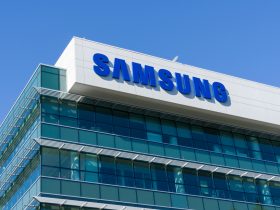A lab at Rice University in Houston, Texas, run by chemist James Tour has developed a new process capable of turning every day rubbish in commercially valuable and environmentally friendly graphene flakes. The process, described in Science Daily, as ‘quick and cheap’, is able to convert tonnes of carbon-based waste, such as coal, plastic or food waste at a fraction of the cost of existing techniques.
Dubbed as “flash graphene”, the technique, details of which were recently published by the science journal Nature, sees carbon-based waste, which can be almost anything, heated to about 5000 degrees Fahrenheit in a process known as Flash Joule heating. It turns the waste into graphene in about 10 milliseconds.
The Flash Joule heating technique itself was also created by the Rice University graduate student Duy Luong, who was also the lead author of the research paper on the flash graphene technique. It improves on other bulk graphene-production processes like exfoliation from graphite and chemical vapour deposition on metal foil, both of which require more time, effort and cost and produce only small quantities of the ‘super material’.
The quality of the graphene produced by the new technique is also superior to that resulting from existing, less efficient, processes. Flash graphene results in ‘turbostratic’ graphene consisting of misaligned layers that are easy to separate out into flakes. The ‘A-B stacked’ graphene other techniques produce consists of layers that are strongly adhered together and difficult to pull apart. To separate out turbostratic graphene layers, the material only needs to be placed in solution or blended with composites.
The development is being hailed as a potentially significant breakthrough for the ‘circular economy’. Co-corresponding author Rouzbeh Shahsavari, adjunct assistant professor of civil and environmental engineering and of materials science and nanoengineering, at Rice commented:
“Turning trash to treasure is key to the circular economy. Here, graphene acts both as a 2D template and a reinforcing agent that controls cement hydration and subsequent strength development.”
The new technique offers environmental benefits in a number of ways. First by recycling waste such as food, with 30% to 40% of all the food the world produces being thrown out, and plastic or rubber waste. Secondly, using cement that is as little as 0.1% graphene in its composition, to bind concrete is believed to mean the environmental impact of the material could be reduced by as much as a third. The production of cement is estimated to account for as much as 8% of carbon dioxide emissions.
The ‘flash’ process itself is also very environmentally efficient:
“All the excess energy comes out as light, in a very bright flash, and because there aren’t any solvents, it’s a super clean process.”
Current graphene production techniques are too expensive for it to be commercially viable to use it to strengthen cement, and in turn concrete. But the efficiency of the new technique.
“By strengthening concrete with graphene, we could use less concrete for building, and it would cost less to manufacture and less to transport. Essentially, we’re trapping greenhouse gases like carbon dioxide and methane that waste food would have emitted in landfills. We are converting those carbons into graphene and adding that graphene to concrete, thereby lowering the amount of carbon dioxide generated in concrete manufacture. It’s a win-win environmental scenario using graphene.”
“In the past graphene has been too expensive to use in these applications. The flash process will greatly lessen the price while it helps us better manage waste.”
“With our method, that carbon becomes fixed. It will not enter the air again.”
The unique combination of strength and flexibility inherent in graphene means it has long been hailed as a ‘super material’. But the expense of producing it has limited its use. But the new “flash” technique looks like it holds the potential to change that.
Bulk composites of graphene with plastic, metals, plywood, concrete and other building materials would be a major market for flash graphene, according to the researchers, who are already testing graphene-enhanced concrete and plastic.










Leave a Reply